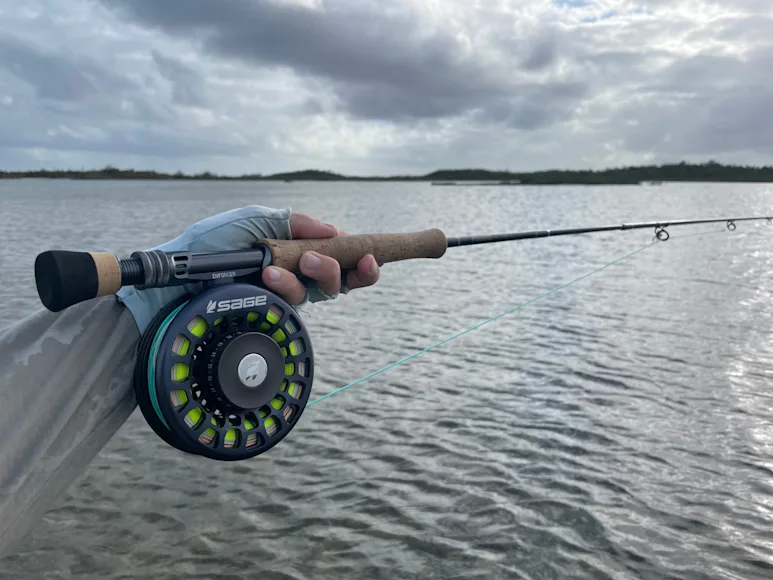_We may earn revenue from the products available on this page and participate in affiliate programs. Learn more ›
_
I was casting a 6-weight all night, and I just couldn’t get my line to lay out in the 20 mph wind. In fact, it was so windy we had to spot-lock the bow of the flats boat in the opposite direction and fish off the stern just to keep us in position.
I finally put down the 6-weight and picked up my brand new Sage Salt R8 fly rod
. On my first cast, the R8 punched through the wind, and my EP minnow fly landed right under the dock. After a couple of strips, a snook came out and inhaled it, and the fight was on.
That was just one of the many instances where the Salt R8 excelled during my two-month test of Sage’s newest fly rod. I spent countless hours casting the R8 in the Florida Keys, Everglades, and The Bahamas. By the end of my trip, it was clear that Sage had designed the ultimate saltwater fly rod for flats anglers everywhere.
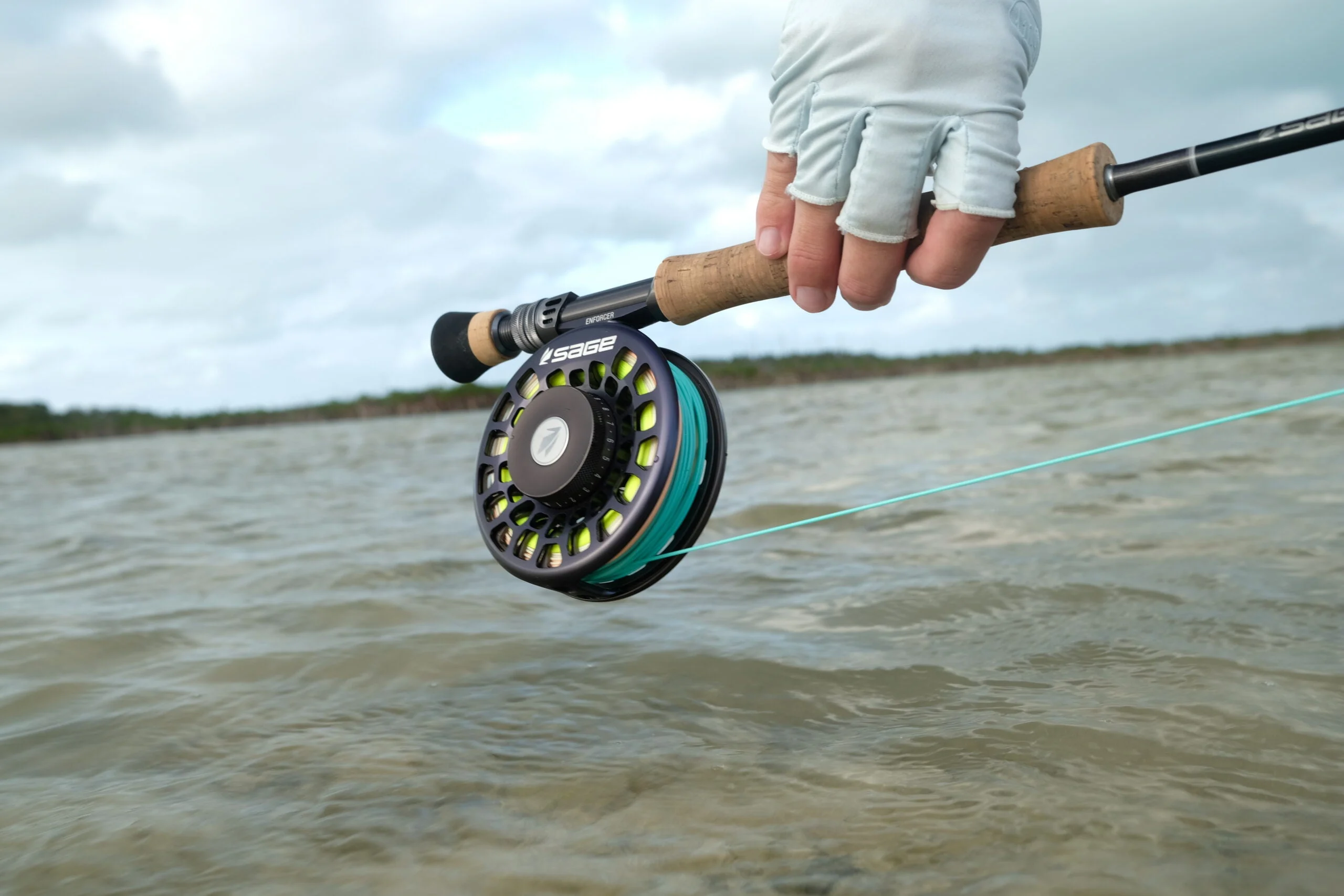
The author holding the Sage Salt R8 paired with a Sage Enforcer reel. Max Inchausti
Sage’s New Generation of Saltwater Fly Rods
The new Sage Salt R8 series is designed specifically for flats fishing. The R8 line of saltwater fly rods replaces Sage’s Salt HD line, which was known for its raw power and casting ability. With the R8 series, Sage set out to decrease the actual weight of the rod while also increasing the touch, feel, and strength of the stick—all of which I can personally attest to.
Sage not only designed the R8 specifically for saltwater applications, but they even tailored each model to a specific species or situation. Of course, you can buy an all-around model—like the 8-weight I tested—that can handle a variety of species and conditions.
During the development stage, Sage spent countless hours in the Florida Keys, working with guides and dedicated anglers to learn exactly what the ideal saltwater fly rod should look like. Besides the obvious expectations, like being able to punch through stiff winds and handle big fish, a good saltwater fly rod should be able to make short, precise casts while also having the ability to fire tight loops at a distance.
The end result was a fast action graphite fly rod that loads effortlessly and is easy to cast. The redesigned rod taper is what gives the R8 the ability to land precise, delicate casts to finicky fish in close. This fine touch and feel are what not only separates the Salt R8 from Sage’s previous Salt HD line, but also from the majority of other rods on the market.
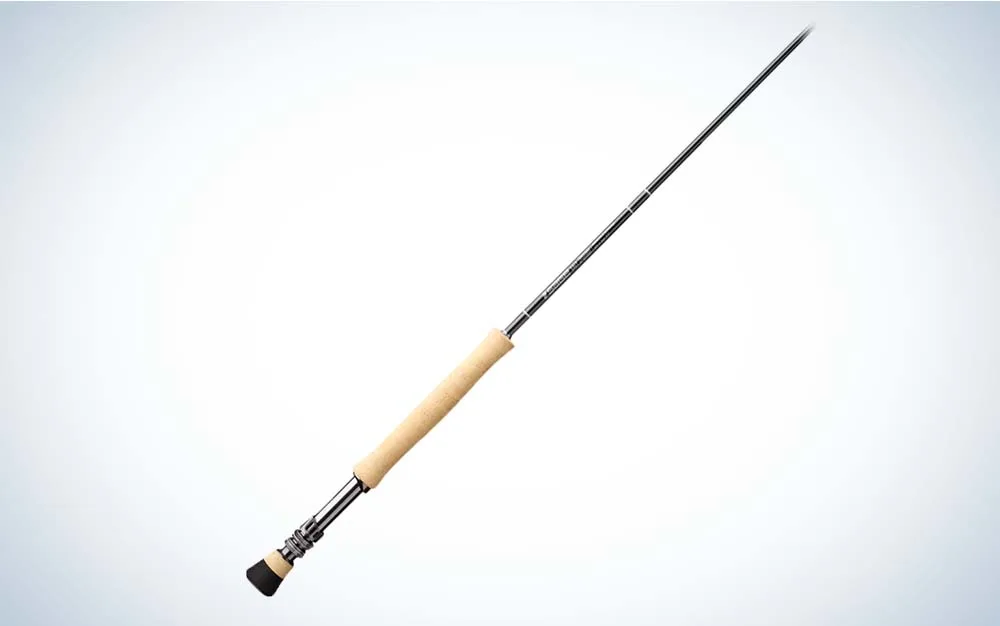
Sage Salt R8 Specs
Line Weight: 8
Length: 9-foot
Action: Fast
Pieces: 4
Warranty: Sage’s original owner warranty
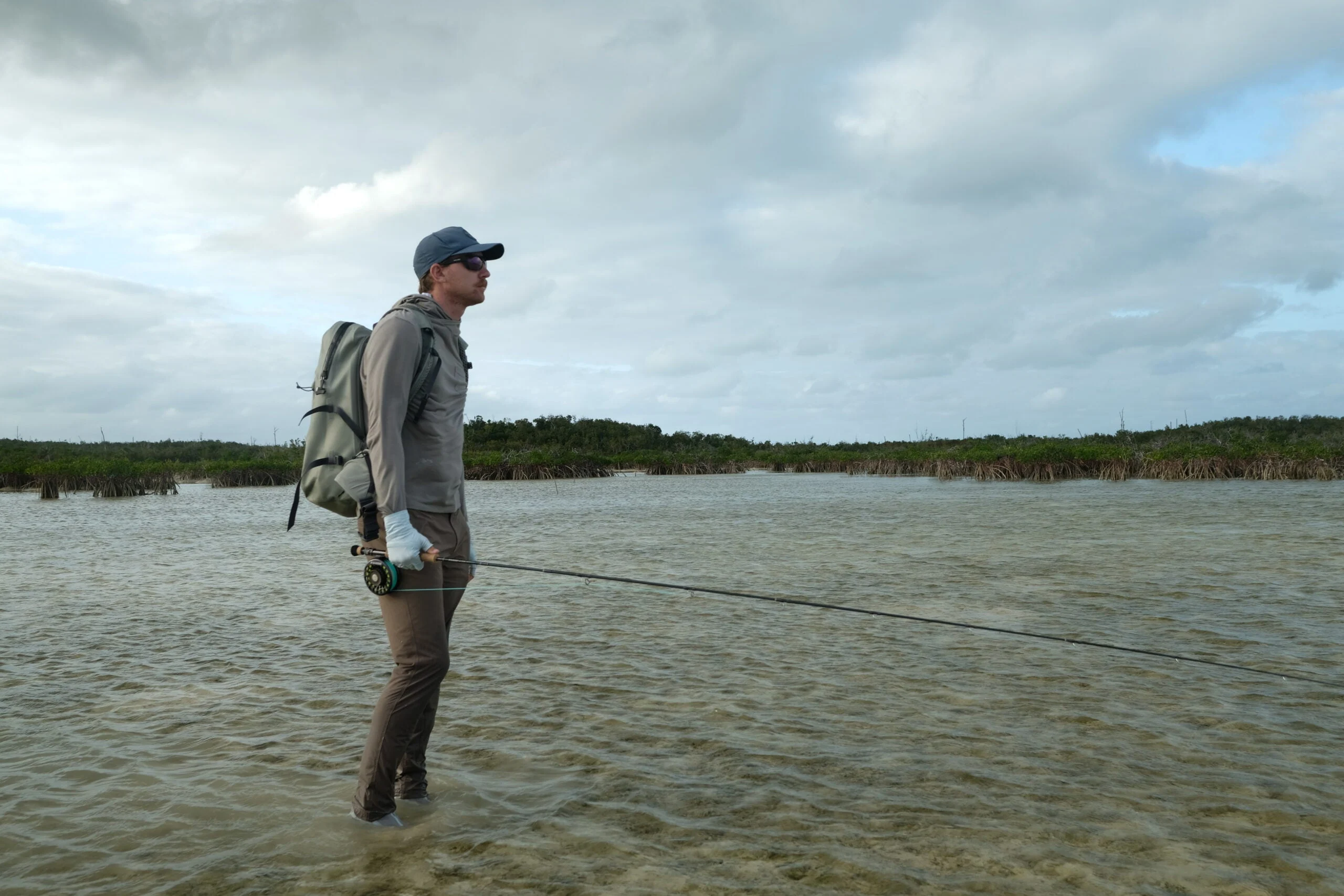
The author looks out across a bonefish flat in The Bahamas while testing the Salt R8. Max Inchausti
Looks and Features
Aesthetics matter—especially when you’re going to spend a grand on a fly rod—and I’m a fan of the simple and clean look of the Salt R8. The blank has a glossy finish to it, but it’s more subdued than others I’ve fished with. It comes in sizes from 6wt all the way up to 15wt. Sage has a specific pursuit or species listed for each model, which I feel is a bit overkill, but others may find it helpful. The 9-foot 8-weight will get the job done for almost every type of inshore species, but if you plan to chase giant tarpon, upgrade to an 11-weight.
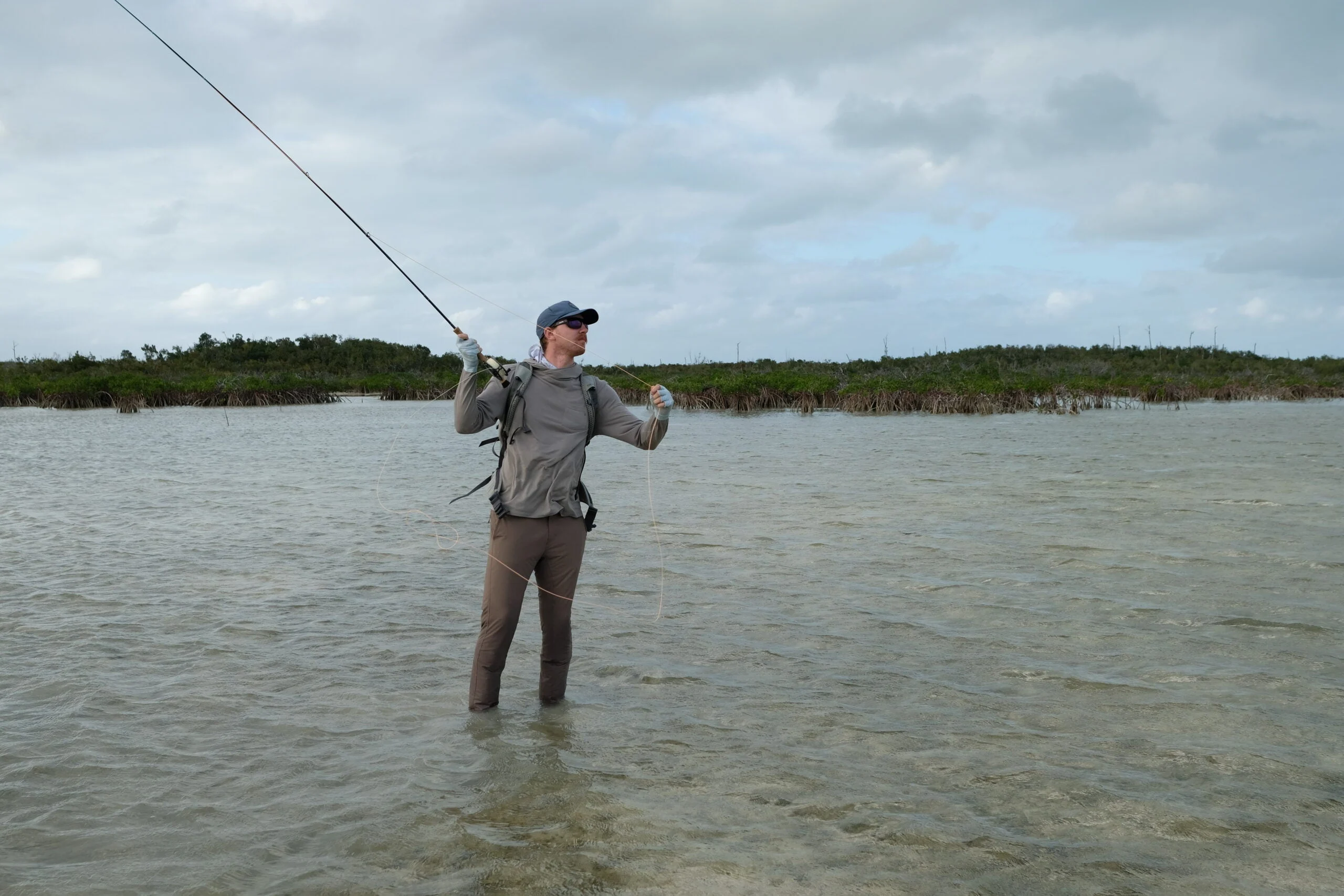
The author makes a cast to a tailing bonefish in The Bahamas. Max Inchausti
How I Tested the Salt R8
I received my 9-foot 8-weight Sage Salt R8 just in time before I hopped on a plane to head to southeast Florida—my testing grounds—for two months. Here I would be fishing with my friend and F&S contributor Max Inachusti off of his 18-foot Beavertail Vengence flats boat
. My objective was to put this rod through the wringer, which meant targeting as many species as possible in all different conditions and scenarios. That included beating mangrove banks for snook and reds, poling the Florida Keys for bonefish, tarpon, and permit, as well as night fishing and throwing flies in harsh winds and pouring rain.
Toward the end of my two-month testing period, I took a trip to Abaco Island in The Bahamas to chase Bonefish on the flats. While the conditions were poor, and I only walked away with a missed hook set, I got to see what the Salt R8 can do in weather most anglers wouldn’t fish in.
I paired my 9-foot 8-weight Sage Salt R8 with a Sage Enforcer reel
and the Rio Flats Pro fly line
. After two months of throwing flies in the Everglades, Florida Keys, Bahamas, and other areas across the Sunshine State, I got a good feel for what the Salt R8 can do. Here are the results:
How the Salt R8 Performed in Poor Conditions
During the first day of my test, I threw flies at rolling tarpon that weren’t interested in any of my offerings. But the constant visual of porpoising silver kings kept me motivated to continue to cast in the pouring rain. In this particular situation, on the Sebastian River, it was a requirement to throw long casts to rolling fish followed up by a short flip to tarpon surfacing 15 feet off the bow. I had no issues making 60-foot casts before dropping a delicate 20-foot presentation. It’s rare to find a rod that has the power to punch through teaming rain and also the soft touch to lay one out right off the boat. The R8 did it with ease.
The next test came later that week during a dock light fishing expedition. Now, say what you want about fishing dock lights, but it is a great opportunity to sight cast to fish. The night I went out was accompanied by 25 mph wind gusts that made it impossible to cast my preferred dock light 6-weight. So I broke out the 8-weight Salt R8, which punched through the wind like a knife through butter. The R8 helped me make long casts with soft presentations through the wind that resulted in numerous snook and baby tarpon. It was also incredibly easy to feel my rod load which was crucial since I couldn’t see my backcast in the dark. Another example of the fine-tuned feel you won’t see in most saltwater sticks.
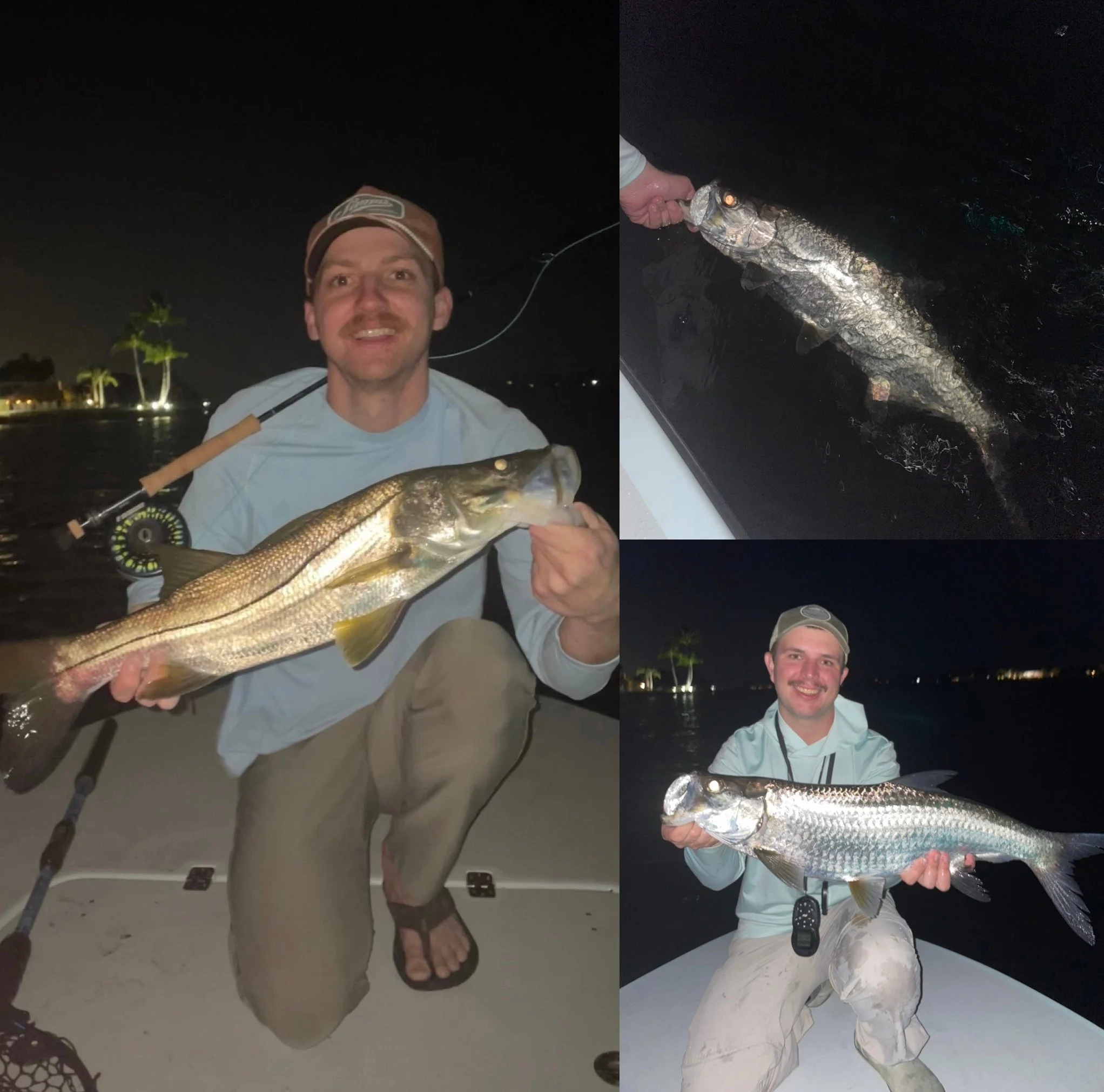
Clockwise from left: The author with a snook caught on the Salt R8; a release shot of a tarpon; Max Inchausti with a baby tarpon caught on the Salt R8. Ryan Chelius
How the Salt R8 Performed on the Flats
The Salt R8 rod was designed for flats fishing, and that’s what most anglers are going to purchase it for. So, it was only natural I spent a weekend in the Florida Keys polling grass flats and three days walking sand flats in The Bahamas looking for bonefish. The R8 proved to be the perfect rod for both situations.
While the fishing was very slow, I still had the opportunity to see how well the Salt R8 could cast and pick up line. On my best days, I could reach the 70- 75-foot mark with ease. Luckily, I had a better fly caster with me who came just short of reaching the 100-foot mark. After my buddy had just missed casting the entire fly line, he turned and said, “It will be hard to find a better rod than that.”
In The Bahamas, I got to put the R8 through its toughest test yet. During my three-day trip, I faced unfavorable conditions with high winds, rain, and poor water clarity. The wind and rain weren’t an issue for the R8, and when the weather did finally break, I had multiple shots at bonefish. I was impressed with how well I could pick up the line and throw a soft, short cast at cruising bones. Again, this is the rod’s best quality.
I felt perfectly equipped with my 8-weight R8 for those big Abaco bones. If I were fishing in another area known for smaller fish, I would consider downsizing to the 6- or 7-weight, but I liked having the punching power of the 8-weight to get my cast through the wind and rain.
Final Thoughts on the Sage Salt R8
The new Sage Salt R8 is a fast action saltwater fly rod with a redesigned rod taper that allows for precise presentations. And that’s what makes this rod so special—the ability to deliver soft casts when needed without sacrificing the power and strength required to fight big fish.
In high-pressure situations—whether fishing for tarpon, bonefish, permit, or redfish—anglers are often required to make long casts followed up by quick, short, accurate casts to cruising fish. The Salt R8 accomplishes this better than any rod I’ve cast. The build quality is extremely durable while remaining lightweight and powerful. I had no issues fighting aggressive snook on this stick, and I am confident that the stronger models can do the same for true monsters.

